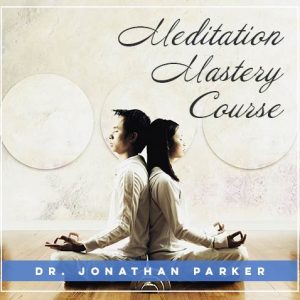
In Buddhist tradition, mindfulness is a step on the path toward enlightenment, and in a state of mindfulness, unpleasant emotions such as greed, shame, anger, and vengeance are completely eliminated. In contemporary self-help literature, mindfulness applies more generally to a broad variety of strategies used to cultivate internal peace, improve self-awareness, and calm an anxious mind. Mindfulness has been repeatedly scientifically proven as a highly effective stress reduction technique, and practicing mindfulness doesn’t require any special skill.
Does Mindfulness Really Work?
Mindfulness is much more than just a feel-good strategy that yields a temporary mood boost. Its long-term benefits have been demonstrated by dozens of scientific studies. For example, mindfulness-based cognitive therapy, originally developed by Jon Kabat-Zinn, has been proven to be a highly effective strategy for treating treatment-resistant depression. A simple eight-week course of mindfulness-based techniques greatly reduced the severity of depression in one study, and therapists who used mindfulness-based techniques report that their clients have a lower rate of depression relapse.
Visualization exercises, which are frequently used to cultivate mindfulness, play a key role in a popular therapy called eye movement desensitization and reprocessing. This approach to mindfulness has been shown to help trauma victims recover more quickly and get back to living happy, productive lives.
But mindfulness techniques aren’t just for people struggling with mental health difficulties. Mindfulness offers numerous additional benefits, including:
* Relief from fleeting stress and anxiety, and protection against mental health conditions such as depression
* Better quality sleep
* Lower blood pressure, improved heart health, and a decreased risk of heart attacks and strokes
* Alleviation of negative emotions such as anger and guilt
* A reduced risk of chronic illnesses
* Pain relief
How Can I Practice Mindfulness?
There’s no single right way to practice mindfulness. Indeed, entire schools of thought have developed around various approaches to mindfulness, with various spiritual teachers, mental health experts, and self-help advisors offering a variety of paths to mindfulness. The key is to find an approach to mindfulness that feels comfortable and right for you. Some techniques to try include:
* Yoga. Yoga offers the benefits of meditative mindfulness in conjunction with gentle stretching and muscle relaxation techniques. Coordinating your breath with your movements can help you cultivate mindfulness.
* Meditation. Meditation is often used synonymously with mindfulness because virtually every type of meditation helps cultivate mindfulness. Whether it’s simply focusing on your breathing, engaging in visualization activities, or repeating mantras to yourself, meditation plays a key role in the journey toward mindfulness.
* Cultivating awareness throughout the day. If you don’t have time to meditate or do yoga, simply taking a minute or two to focus on your breathing, visualize a soothing image, or repeat a helpful mantra can help you grow in mindfulness.
No matter what approach you use, your mind and body will quickly begin to see real benefits from daily mindfulness practice. There’s no upper limit on how much time you can spend cultivating mindfulness, but even if you’re strapped for time, five minutes a day can yield big benefits.
References:
Benefits of meditation. (n.d.).Transcendental Meditation. Retrieved from http://www.tm.org/benefits-of-meditation
Chang, V. Y., Palesh, O., Caldwell, R., Glasgow, N., Abramson, M., Luskin, F., … Koopman, C. (2004). The effects of a mindfulness-based stress reduction program on stress, mindfulness self-efficacy, and positive states of mind. Stress and Health,20(3), 141-147. doi: 10.1002/smi.1011
Kuyken, W., Byford, S., Taylor, R. S., Watkins, E., Holden, E., White, K., … Teasdale, J. D. (2008). Mindfulness-based cognitive therapy to prevent relapse in recurrent depression.Journal of Consulting and Clinical Psychology,76(6), 966-978. doi: 10.1037/a0013786
Wilson, S. A., Becker, L. A., & Tinker, R. H. (1995). Eye movement desensitization and reprocessing (EMDR) treatment for psychologically traumatized individuals.Journal of Consulting and Clinical Psychology,63(6), 928-937. doi: 10.1037//0022-006X.63.6.928

